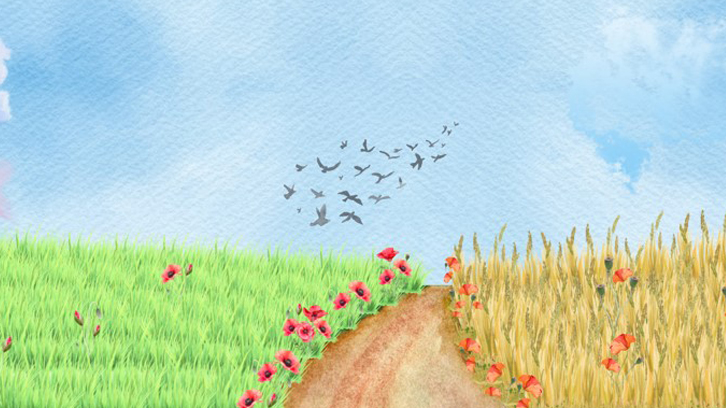Floral transition and adaptation to a changing environment: from model species to cereal crops

How do plants know the best time to flower? ICTA-UAB researcher Michela Osnato reviews a century of botanical research on the regulation of the floral transition, from the early 20th century with research on hemp to the early 21st century with genetic research on cereal crops.
To flower or not to flower, this is the existential question in the plant kingdom. This decision is especially critical for annual plants, as the timing of flowering largely influences the production of seeds and consequently the perpetuation of the species. But… How do plants decide when it’s the right time to flower?
The latest release of Teaching Tools in Plant Biology (TTPB45) addresses this fascinating question by reviewing one century of research on the regulation of the floral transition (i.e., the switch from vegetative to the reproductive growth). The first study on flowering time was carried out at the beginning of the 20th century by a French PhD student who discovered that hemp (Cannabis sativa) grown in the greenhouse produced only leaves under long summer days and required short autumn days to start forming flowers. Subsequent physiological analyses in different flowering plants led researchers to hypothesise the existence of a universal florigen - a mobile molecule that accumulates in the leaves in optimal conditions and travels through vascular tissues to the shoot apex to trigger the formation of reproductive structures. The nature of the florigen remained mysterious for 70 years, until 2007 when four research groups independently discovered that small proteins belonging to the phosphatidylethanolamine binding proteins (PEBP) family induce flowering in the model species Arabidopsis thaliana and Oryza sativa (rice).
In the last decades, molecular studies and the use of cutting-edge OMICS-technologies have allowed the dissection of genetic pathways that control the floral transition and the characterization of several floral regulators. In a nutshell, the balance between two contrasting forces - floral repressors that delay flowering in non-inductive conditions and floral activators that promote the reproductive growth in inductive conditions - modulates the activation of the florigen, and the production of seeds in optimal circumstances. Further research in agronomically important plants, including major cereal crops, revealed the functional conservation of the florigen and key floral regulators but also the presence of species-specific factors acting upstream. Interestingly, genetic variation at few flowering time loci has allowed plant adaptation to new ecosystems by re-tuning the formation of flowers and seeds in different environments, thus expanding the cultivation area of staple food crops.
Figure 1. Timeline of one century of research in plant science highlighting key hypothesis, discoveries and experimental approaches underlying flowering time control.
To sum up, plants have evolved complex molecular mechanisms to guarantee reproductive success in the most favourable conditions by integrating internal cues (e.g., plant age and physiological stage) and external signals (e.g., changes in daylength and ambient temperature). Nevertheless, unexpected weather events related to climate change severely affect flowering in important grain crops, thus representing a serious threat for global food security. The TTPB45 concludes with a look at how plants respond to abiotic stresses related to a changing climate at the onset of reproductive growth.
Research Associate,
Institut de Ciència i Tecnologia Ambientals (ICTA - UAB)
Universitat Autònoma de Barcelona
The Plant Cell Assistant Features Editor
References
Osnato, M. The Floral Transition and Adaptation to a Changing Environment: From Model Species to Cereal Crops. Teaching Tools in Plant Biology: Lecture Notes. The Plant Cell. https://doi.org/10.1093/plcell/koac304
TEACHING TOOLS IN PLANT BIOLOGY are educational resources based on up-to-date research and peer-reviewed by experts in the field, freely available here.


